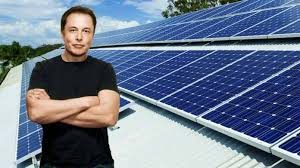 Elon Musk’s secret master plan for Tesla and the world is to accelerate the complete switch to an electric future where our cars plug into out homes and vice a versa and everything is eventually powered by the sun and the wind. In last week’s post I mentioned some of the benefits that a massive switch to electric vehicles would bring which are more or less in line with Musk’s vision. In this, the third of a series of posts on electric vehicles, I will talk bout four important risks.
Elon Musk’s secret master plan for Tesla and the world is to accelerate the complete switch to an electric future where our cars plug into out homes and vice a versa and everything is eventually powered by the sun and the wind. In last week’s post I mentioned some of the benefits that a massive switch to electric vehicles would bring which are more or less in line with Musk’s vision. In this, the third of a series of posts on electric vehicles, I will talk bout four important risks.
One of the critical aspects of that roadmap to the future is that by first concentrating the issue of climate change at the power station level, the world can then move on to develop the renewable power and storage infrastructure needed to fix climate change. The first important risk is therefore there does occur a massive adoption of electric vehicles over the next 20-30 years but that the changes to grid architecture and power generation do not occur. This could actually lead us to using more coal, oil and gas to produce more electric power and thus add to, rather than mitigate, the problem of climate change.
The second risk is that we are succesful in triggering the transition to a low carbon economy and unwittingly upset further the delicate geo-political balance in the world today. When oil prices fell to $ 30 per barrel in 2015 and looked like they might stay there, there was increasing concern about what that meant for the economies of Russia, Venezuela and many of the players in the Middle East. A related issue is that once the United States becomes self sufficient in terms of energy and no longer is importing crude oil form the Persian Gulf, it may choose to withdraw the fifth feet from Bahrain where it has been protecting the sea lanes since 1995.
Combining these two ideas, a renewable electric future could not only cause the price of oil to fall for the long term leaving Iran, Saudi Arabia, and their neighbors without much of their current revenues but also leave them without a U.S. naval presence to keep the peace. My concern is that the result could be war on a much bigger scale than the Iran – Iraq conflict which lasted 8 years and cost over 1 million lives according to one source.
The third risk has to do with the minerals needed to build an electric future i.e. copper, lithium, nickel, cobalt and the so called rare earth metals that are normally shown on the bottom of the periodic table. Mining companies such as Glencore are optimistic about the boom but others look at the geo-political implications as the production of cobalt comes mainly from Central Africa and China controls 90% of the world’s rare earth production. A quick scan on articles on this topic show some analysts predicting shortages of critical minerals and others arguing that current prices will drive a sharp increase in capacity producing a boom and bust cycle.
The final risk has to do with assuring that the boom in electric vehicles does not cause more environmental problems than it solves. The environmental impact of the mining of many of the minerals mentioned above, and especially the rare earths, has had negative environmental impacts and Battery recyclability, for example, is another issue which will need to be adressed.
My view is that these issues will be sorted out over time, as they always are, in fits and starts but that the advantages to moving in this direction far outweigh the risks.

